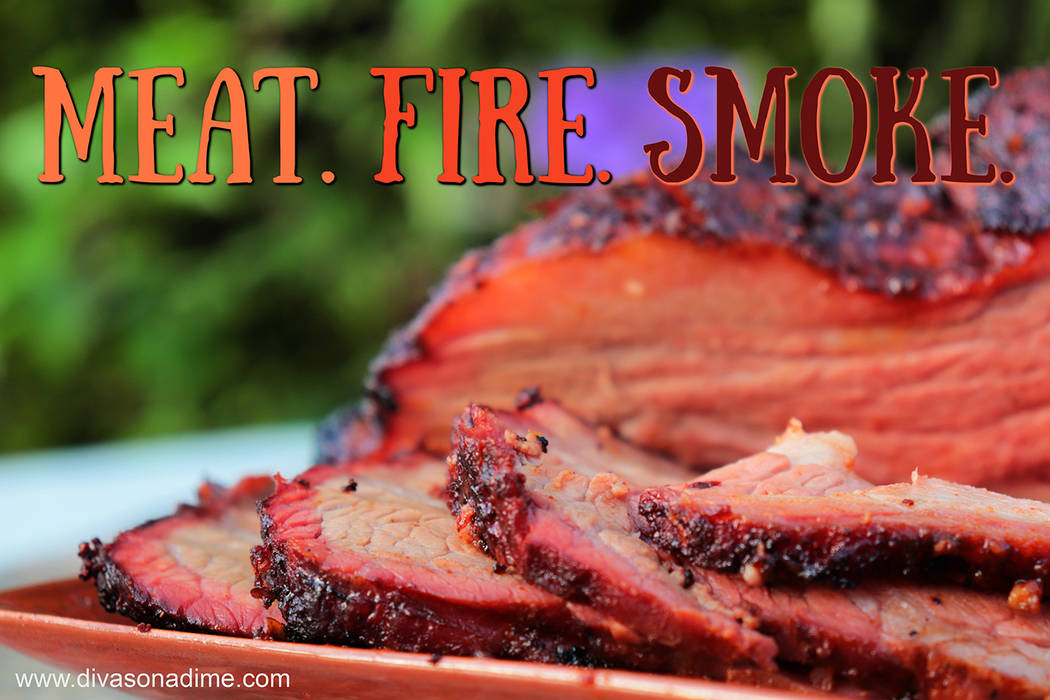Divas on a Dime: Demystifying the science of smoke for BBQ season
We’re about to enjoy a glorious three-day weekend. Memorial Day is our opportunity to honor the brave men and women who gave their lives serving in the armed forces. We celebrate their memory with friends and loved ones. Where people gather, there shall be food. Let’s make sure it’s good food!
It’s time to bust out the barbecue for the official, unofficial start of summer. Total foodie that I am, I’m blessed to know some very knowledgeable pitmasters who have shared their expertise with me over the years. I’m happy to share with you.
Today we’ll focus on smoking and barbecuing meats. Smoking involves slow-cooking meat using wood smoke with indirect heat at around 225°F degrees. Low and slow is the way to go. Barbecue means slow-cooking meats through either direct or indirect heat, utilizing charcoal at around 350°F degrees, with the lid closed. If you’re lookin’ you ain’t cookin’.
Ideal types of meat for this kind of cooking are the larger or tougher cuts of meats that require longer cooking times, like brisket, tri-tip, pork shoulder, ribs, or whole chickens. Let smoke be the star of the show. Season simply with a dry brine of ½ teaspoon kosher salt per pound of meat.
While charcoal delivers heat, wood smoke brings flavor. There are lots of choices when it comes to pairing wood with meats to create different flavor profiles. Mild woods like alder pair with everything, even fish. Sweet fruity woods like apple and cherry go well with pork and poultry. Hickory, pecan, oak and mesquite have stronger flavors and go with everything if you don’t over-smoke your meat. They come in sizes from hardwood pellets, small woodchips to bigger chunks of wood, depending on the type of smoker or charcoal grill you have.
We’ve all been told to soak our wood before adding to the coals. Honestly, it’s unnecessary. For wood to combust and smoke, it must rise above 570°F. Wet wood steams, stalling the temperature of the wood at 212°F until the water evaporates. Also, adding wet wood lowers the cooking temperature. You want to keep a consistent temperature because fluctuations aren’t good for tender juicy cuts of meat. The smoke you want is an almost invisible, bluish-colored smoke. Cured, dry hardwood burns and produces that kind of smoke.
Don’t over-smoke the meat. Most meats don’t need more than half their cooking time in smoke. Finish cooking the meat using heat from the coals or finish in a low oven.
You don’t need a smoker to smoke meats. To smoke meat on a charcoal grill, you need two heat zones, direct and indirect. Prepare the grill by placing half the amount of charcoal you’d typically use on one half of the grill. This is the direct zone and the reduced amount of coals helps keep the temperature appropriately low (225°F). On the indirect side, place an aluminum pan filled with about a quart of water. This helps regulate temperature and adds humidity. When the coals are ready, toss some wood chips or chunks onto the coals, place meat on the indirect side and close the lid with the vents open. Use the vents to help regulate the temperature.
Which brings me to the most important tip: Cook with a thermometer, not with a clock! Invest in a digital probe thermometer. Just ten degrees can make the difference between juicy and dried out.
While smoking does take some knowledge, it shouldn’t be seen as difficult. If you’re a beginner, start with a pork shoulder or whole chicken. With a little time and practice, everyone can do this.
“Divas On A Dime” – Where Frugal, Meets Fabulous! Visit Patti at www.divasonadime.com or on Facebook at DivasOnADimeDotCom. Email Patti at divapatti@divasonadime.com

















